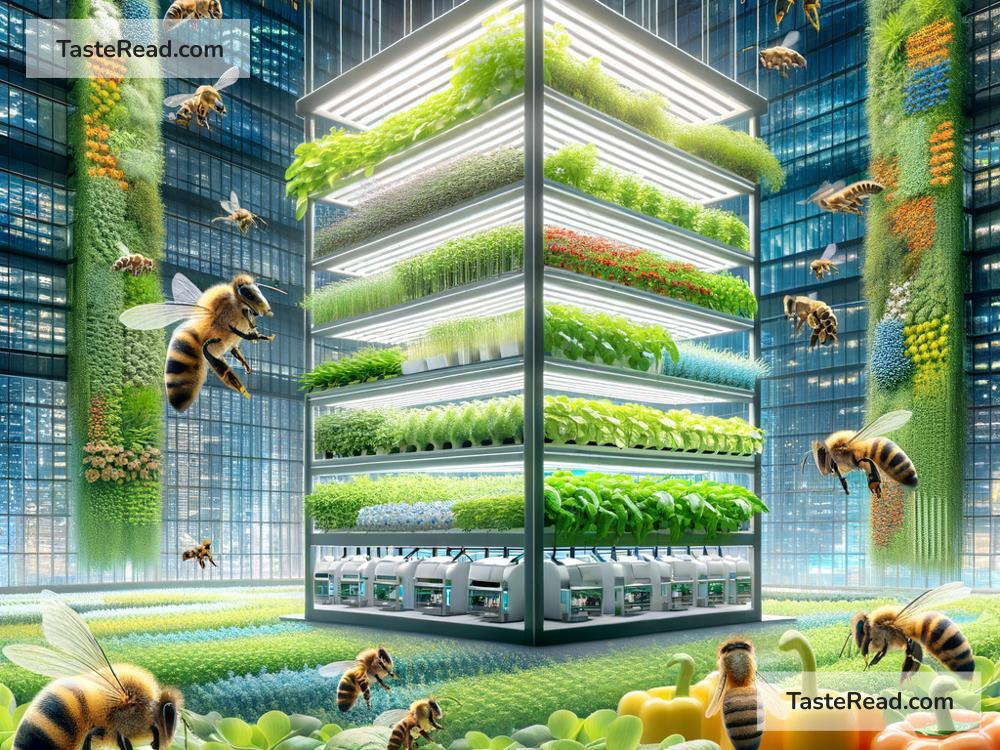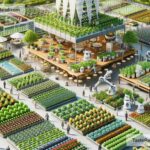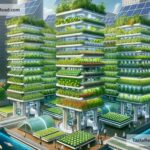The Future of Food and Biodiversity Loss: A Simple Guide
Food is essential for life. It sustains us, brings communities together, and shapes cultures across the globe. But our food systems are at risk. As the world population grows and agriculture expands, we are seeing a troubling decline in biodiversity—the variety of plants, animals, and ecosystems that are crucial for the planet’s health. If this trend continues, it could impact the future of food and threaten the very resources we depend on. In this blog, we’ll explore these issues and discuss what changes are needed to protect both biodiversity and the way we produce food.
What is Biodiversity?
Biodiversity refers to the wide range of living things on Earth, from microscopic organisms to large animals, including plants, fungi, and ecosystems. Think about all the different types of grains, vegetables, fruits, and animals that we eat—they’re part of biodiversity. Healthy ecosystems rely on biodiversity to function. Forests, oceans, and farmland all need a balance of species to thrive.
Without biodiversity, ecosystems become weaker and are less able to cope with threats such as climate change, pollution, and disease. Unfortunately, human activities—particularly those related to food production—are causing biodiversity to decline faster than ever.
How Does Food Production Affect Biodiversity?
The way we grow and consume food has a major impact on the environment. Agriculture uses around 50% of the world’s habitable land, and forests, wetlands, and grasslands are often cleared to make room for farming. When these natural habitats disappear, many species lose their homes and food sources, leading to extinction.
Here are some key ways food production contributes to biodiversity loss:
-
Monoculture Farming: Monoculture refers to growing just one crop over a large area, like wheat, corn, or soybeans. While this method is efficient for farmers, it reduces biodiversity. It replaces diverse ecosystems with a single plant species and makes the land more vulnerable to pests, diseases, and soil erosion.
-
Overuse of Pesticides and Fertilizers: Chemicals used in farming can harm bees, birds, and other animals while polluting water sources. For example, pesticides used to kill pests can also harm pollinators like bees, which are essential for growing many fruits and vegetables.
-
Livestock and Deforestation: As demand for meat increases, more forests are being cleared to make room for livestock or animal feed crops like soy. Forests are home to countless species, so cutting them down directly contributes to biodiversity loss.
Why Does Biodiversity Matter for the Future of Food?
Biodiversity is not just about saving wild animals or pretty landscapes—it’s deeply connected to the food we eat. Healthy ecosystems ensure that plants grow well, soils stay fertile, and animals survive.
Here are some ways biodiversity supports food systems:
-
Pollination: Bees, butterflies, and other pollinators play a huge role in growing crops like apples, tomatoes, and coffee. Without pollinators, many foods we rely on might disappear.
-
Natural Pest Control: A diverse ecosystem includes predatory animals like birds or insects that eat pests. If these predators disappear, farmers might rely on more harmful pesticides, affecting the environment.
-
Soil Health: Biodiversity in the soil, like bacteria and fungi, helps break down nutrients and keep farmland productive. Losing soil biodiversity could mean crops won’t grow as well.
-
Climate Resilience: Diverse ecosystems can better adapt to extreme weather events like floods or droughts. In the face of climate change, maintaining biodiversity could help protect future food supplies.
What Can We Do to Protect Biodiversity?
Changing the way we produce and consume food can stop biodiversity loss and secure the future of food. While governments and organizations play a big role, individuals also have the power to make a difference. Here are some solutions:
-
Sustainable Farming: Farmers can grow multiple crops instead of just one (called polyculture) to maintain biodiversity. Agroforestry, where trees and crops are grown together, can protect soil and provide habitats for animals.
-
Reducing Meat Consumption: Eating less meat, especially beef, can reduce pressure on forests and grasslands. Plant-based diets are better for biodiversity and climate health.
-
Supporting Local and Diverse Foods: Buying local fruits and vegetables or choosing less common crops helps preserve a variety of species. It also supports small farmers who use sustainable practices.
-
Stopping Food Waste: Reducing food waste means fewer resources are used in production, which helps lower the environmental impact. Try to plan meals carefully and compost leftovers when possible.
-
Protecting Wild Habitats: Governments and organizations can protect forests, wetlands, and other natural areas by creating conservation programs or reserves. These actions help keep ecosystems intact.
-
Raising Awareness: Educating others about the connection between food production and biodiversity can inspire change. Share facts and tips with family and friends to build a more informed community.
A Hopeful Future
Although the challenges are significant, there is hope for the future of food and biodiversity. Innovative farming techniques, global cooperation, and growing awareness can help us reverse the damage and create a sustainable world. By valuing biodiversity and understanding its role in our food systems, we can ensure that future generations enjoy healthy ecosystems, nutritious food, and a thriving planet.
While individuals can’t fix the problem overnight, even small actions—like buying seasonal foods or cutting back on meat consumption—can add up and make a big difference. Together, we have the power to protect biodiversity and build a better future for both people and the planet.


